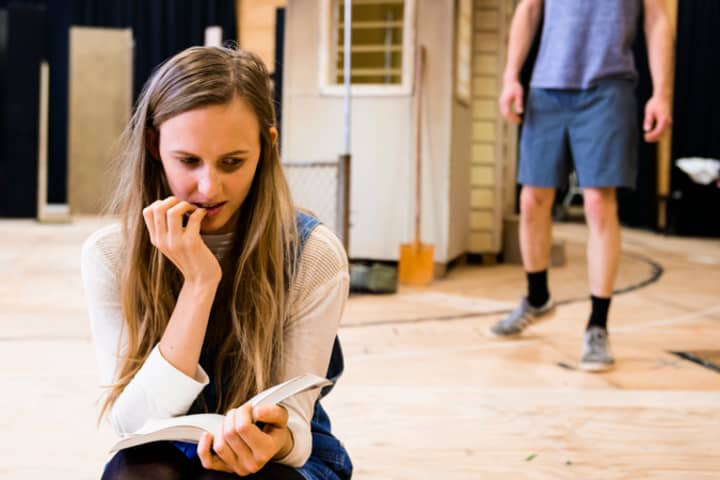‘I’ve always been attracted to Southern Gothic fiction. There’s something very warm and generous about those regional American writers… and it seems to be a literary ilk that would lend itself well to the Australian condition.’ Craig Silvey was onto something when he borrowed narrative tropes and themes from the Southern Gothic novelists he admired.
It began as an insult – or at least a term of dismissal – from one American novelist to certain of her fellows. A proud Virginian, Mary Glasgow was a writer of an earlier, more gentile generation, whose pen did not dwell too long on guilt and misery. Her novels were very popular in her day and, in 1935, in her capacity as elder spokeswoman for the literature of her region, she disparaged a type of writing that created a negative impression of the South.
She singled out Erskine Caldwell, author of, among other excrescences, a best-selling novel about miserable sharecroppers Tobacco Road, and William Faulkner, whose series of experimental novels set in the mythical Mississippi county of Yoknapatawpha, included The Sound and the Fury, As I Lay Dying and Light in August. Wishing to deflate the respect these novels had attained from Yankee critics, Glasgow argued that they were no more than a throwback to the lurid, sensational novels of the English Romantic period, being too preoccupied with ‘aimless violence’ and ‘fantastic nightmares.’ Thus she categorised them as ‘Southern Gothic.’
The phrase caught on, as usefully descriptive phrases do, though those who subsequently used it rarely used it disparagingly. More than just Caldwell and Faulkner, it seemed to capture an entire school of fine southern writers in its net: Flannery O’Connor, Carson McCullers, and Walker Percy. Subsequently, Truman Capote, Harper Lee, Tennessee Williams, Beth Henley, Cormac McCarthy and Anne Rice were added. Thinking harder on it, critics and PhD candidates found distinguished precursors, such as Edgar Allan Poe and Mark Twain. From Glasgow’s lightly tossed insult, a whole tradition sprang up.
These authors’ works seem a mixed bag, but literary categories are always a mixed bag; what matters is what they have in common. Squint your eyes to see the family resemblance: small town life that harbours secrets and crimes; flawed, disturbed and outcast characters; decaying settings that suggest decayed values, especially hypocrisy and complicity; and aberrant behaviour that runs from murder to madness to incest, stopping all stations. The novelist Pat Conroy once quoted his mother on the subject of southern literature. She said, ‘It can be summed up in these words: “On the night the hogs ate Willie, Mama died when she heard what Daddy did to Sister.”’
That’s succinct, but misleading. The stories are rarely so sensationally flavoured; the Southern Gothic is an undertaste, a taint. Across its terrain, writers take the air with an insouciant gait. The prose can be gracious, even warm and forgiving, often bubbling with a humorous and ironic tone, and the characters perfectly likable until their masks slip. The act of writing about the South is often like the lifting of a veil, and the genre resembles Magic Realism in the way grotesque events arise so casually out of everyday life. In the Southern novel, the magnolia blossoms look beautiful as they fester on the branch, the fly drowns in the mint julep, while the mundane and the macabre share the porch swing.
And behind it all, often not stated, is the oppressive weight of history: slavery, civil war, defeat and long decades of decline. The myth of antebellum grandeur and ease contrasts with the current reality of hardship and stagnation. It was probably this more than anything else that Mary Glasgow found distasteful, the implication that the South is degraded and degenerate. And racism is the ghost that floats through many of these books, though it is often part of a much broader need for the ‘good’ citizens of the town to disparage an underclass, whether black folk or white trash or just different. The way a dirt farmer takes out his frustration by whipping his mule is repeated all the way up the social scale. No matter who you are in Southern Gothic fiction, there’s always someone beneath you that you can victimise.
The Southern Gothic is so closely tied to a certain climate and soil that you’d never think it could be transplanted, but it might thrive in Australia. Our regional towns, beneath their civil municipal exteriors, can be just as easily imagined as isolated and insular, given to hardship and despair, riven with hidden rivalries and hatreds, filled with secrets, rank with hypocrisies, fearful of change, narrowed in outlook. The grotesque and the decayed would look just as picturesque in our harsh landscapes.
And our history, terrible and bloody, has left a canker of indigenous dispossession, imprisonment and squalor that rots at the root. When Craig Silvey thought he would borrow many narrative tropes and themes from the Southern Gothic novelists he admired for his novel Jasper Jones, he was certainly on to something.
This is an excerpt from the Jasper Jones programme. For more features, interviews and cast information, you can purchase a programme from our friendly theatre staff at your next performance. Jasper Jones plays at Southbank Theatre until 9 September.
Published on 29 July 2016





